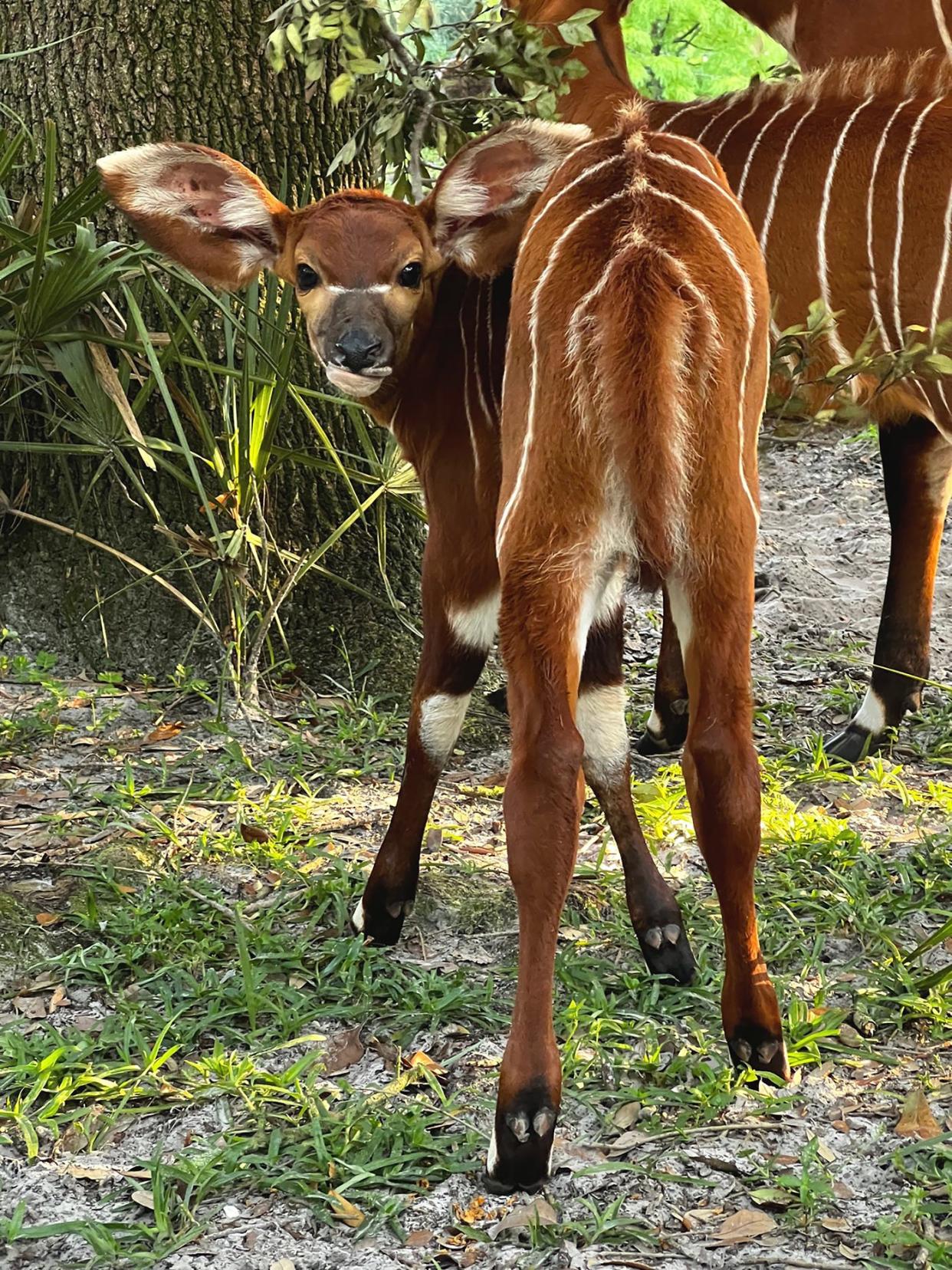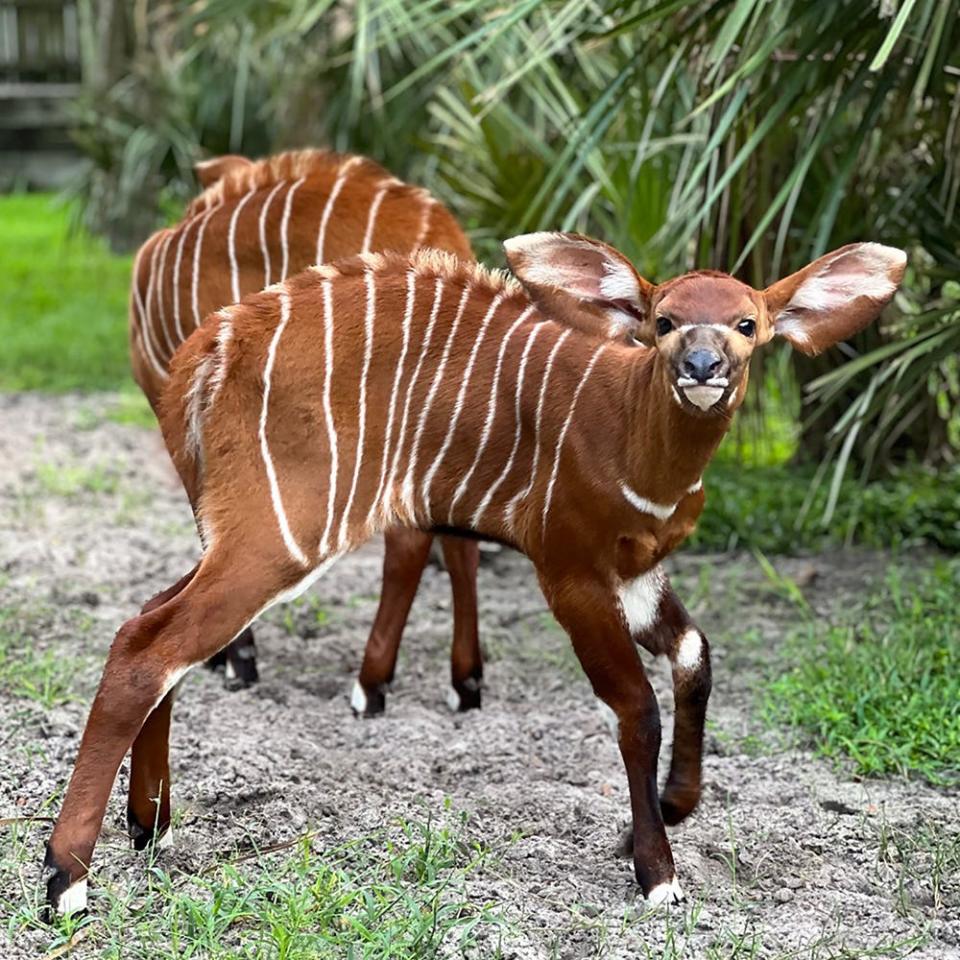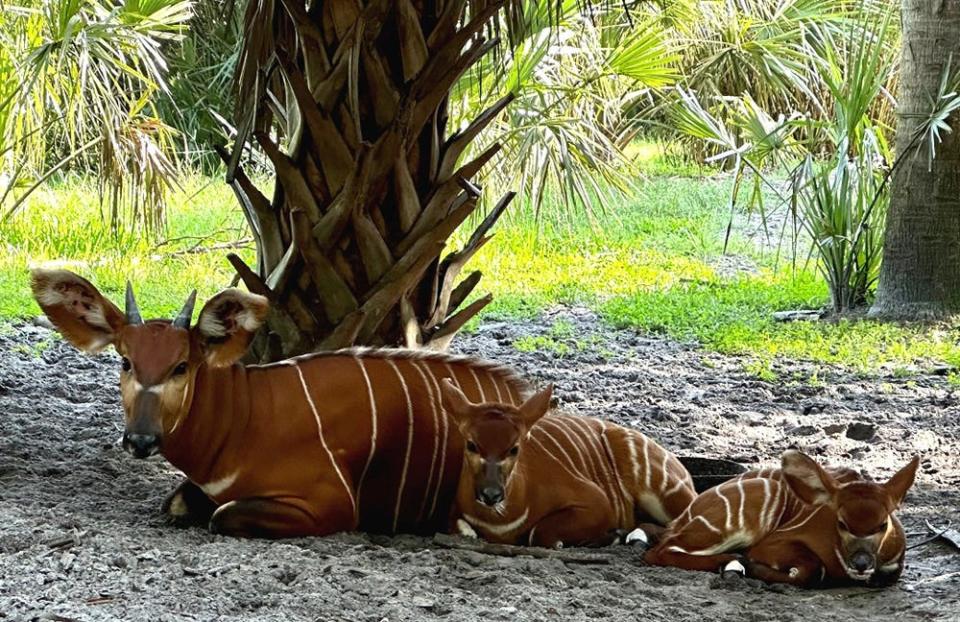Baby bongos: Second calf this year born to Jacksonville Zoo's endangered antelope species

The Jacksonville Zoo and Gardens' herd of the critically endangered eastern bongo species recently had a new arrival, the second calf born there this year.
She is a girl and her name is Mojo.
On Aug. 10, the bongo calf was born to mother Sienna and father Mickey, who also sired a calf named Kimani born June 25, according to the zoo's Facebook page. The 41-pound new arrival is also half-sister to Cayenne, the female bongo born there last September.
Mojo is the 10th bongo born at the zoo since 2018, which makes her birth "extra exciting" for staff, zoo spokeswoman Emily Long said. Some of the bongos born in Jacksonville have been relocated to other zoos.
"She has continued to build solid relationships with her siblings and the rest of the herd and can be seen with both her sisters throughout the day," Long said.

The Jacksonville herd, part of the forest antelope family native to Kenya, now has six members, according to the Facebook post. They are in the zoo's Africa Loop exhibit, most likely under the bamboo, palm trees or along the boardwalk.
And what's a bongo?
"Unlike antlers, horns are never shed and continue to grow throughout the bongo’s life — sometimes up to three feet," according to the zoo post.
A chestnut brown color with 12 to 14 white horizontal stripes down their backs, they can weigh from 460 to 890 pounds and stand up to 4½ feet at the shoulder, according to the zoo. Bongos are the only antelope with spiraled horns, usually with one or one-and-a-half twists, that adorn both sexes.

They are the largest African forest antelope and are found throughout central and west Kenya. But the eastern bongo, also known as mountain bongo, is only found in a small, densely forested mountain region in central Kenya. There are an estimated 47 to 140 left in their natural habitat, according to the zoo.
The zoo is at 370 Zoo Parkway in North Jacksonville. For hours, admission prices and other information, go to jacksonvillezoo.org.
bcravey@jacksonville.com, (904) 359-4109
This article originally appeared on Florida Times-Union: Second calf this year born to Jacksonville Zoo's bongo herd

